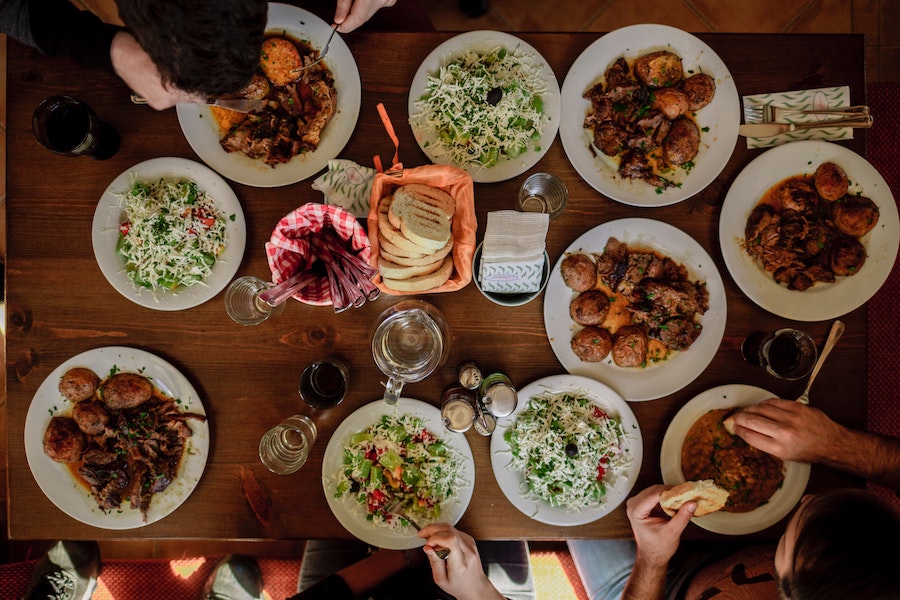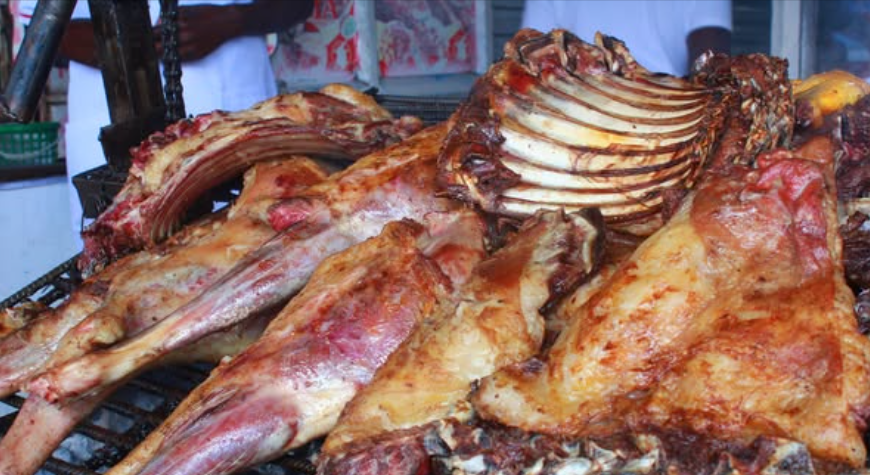What Is Common Across All Regions in Kenya?
These staple foods and practices unite Kenyans across regions, regardless of tribal or cultural background:
🍖 1. Nyama Choma (Grilled Meat)
-
What it is: Charcoal-grilled meat, typically goat or beef, served with ugali and kachumbari (fresh tomato-onion salad).
-
Why it’s loved: It’s more than a dish — it’s a social event. Shared in gatherings, at roadside joints, or during family celebrations.
🌽 2. Ugali (Maize Meal)
-
What it is: A dense maize flour dough, cooked with water and served with meats, vegetables, or sauces.
-
Why it’s common: Affordable, filling, and easy to prepare. It’s considered a staple for nearly every Kenyan household.
🍲 3. Sukuma Wiki (Collard Greens)
-
What it is: Sautéed leafy greens cooked with onions and tomatoes.
-
Why it’s loved: Widely available, nutritious, and budget-friendly. The name means “push the week,” reflecting its role as an everyday meal extender.
🥘 4. Githeri / Nyoyo (Maize & Beans Stew)
-
What it is: A boiled mix of maize and beans, often fried later with onions and spices.
-
Cultural reach: While Githeri is Kikuyu in origin, the concept of mixed grain stew exists in most Kenyan communities under various names.
🍌 5. Matoke / Plantains
-
What it is: Stewed green bananas or plantains, particularly in Western and Kisii areas, but eaten countrywide.
-
Why it spreads: Easily adaptable with meats or veggies, and a nutritious alternative to starches like rice or ugali.
☕ 6. Kenyan Chai (Milky Tea)
-
What it is: Black tea brewed with milk and sugar — often with added ginger or spices.
-
Daily ritual: Served with breakfast or during social visits. Tea is grown locally (especially in Kericho and Mt. Kenya), making it a national drink.
🥘 7. Stews & Sauces
-
Most regions prepare meat or vegetable stews, flavored with:
-
Onions, tomatoes, garlic, ginger
-
Regional spices (e.g., turmeric, curry, pilau masala)
-
Coconut milk (especially at the Coast)
-
🌍 What Makes Kenyan Cuisine Unique?
-
Fusion of cultures: Bantu, Nilotic, Swahili, and colonial influences.
-
Diverse climates = diverse crops: Highland potatoes, Rift Valley maize, coastal coconuts, and lake fish.
-
Community dining: Meals are typically shared; food is seen as a symbol of togetherness.
🧂 Modern Kenyan Food Trends
-
Urban areas (like Nairobi) have seen a rise in fusion cuisine, with chefs blending traditional dishes with global techniques (e.g., Ugali fries, Swahili pasta).
-
Restaurants and eateries now cater to vegetarians, vegans, and healthy eating trends — often adapting local meals like managu or arrowroots into modern menus.


